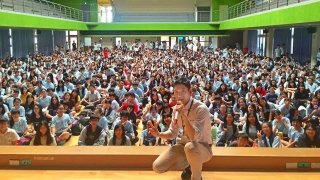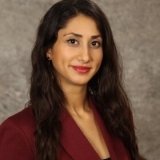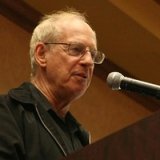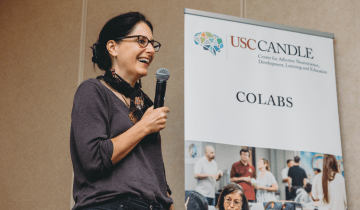A short history of language learning and TESOL
Language learning is as old as the concept of language itself, which is believed to have emerged around 135,000 years ago. Over those thousands of years, the way humans learn language and the reasons why they want to learn languages other than their native tongue have both changed enormously and stayed the same.
At the crux of language learning is the desire to communicate one’s ideas with others, from Cleopatra, the famous last pharaoh of Egypt, who was said to know nine languages, to Greek scholars of the third century CE studying Latin, who consulted the Hermeneumata, one of the first known instructional manuals dedicated to language learning. As long as people from different cultures have mixed, there has been a need for humans to learn the languages of others.
The way we teach language has evolved considerably from those early days, where language learning was often an activity of the elite and involved rote memorization. But as history has proven, the language that many want to learn is the one considered the most dominant in business and culture. Since the rise of the British Empire in the 18th century, English has emerged as the global language. And because of this dominance, for many who aren’t born in countries where English is the primary language, acquiring English is an important goal or even a necessity.
Professionalization of the English language teaching field took shape in the mid-20th century. An important benchmark was the founding of the association of Teachers of English to Speakers of Other Languages (TESOL) in 1966, with a mission to advance professional expertise in the field. Around this time, degrees and certificates in teaching English began to be offered.
USC’s TESOL program has historically enjoyed much prominence within the TESOL and applied linguistics profession. Early faculty in the program included USC Rossier Emeritus Professor of Education Stephen Krashen, renowned for his work on second language acquisition and bilingual education; Professor Fraida Dubin, a curriculum development specialist; and Professor David Eskey, known globally for his work on second language reading.
Over the last two decades, USC Rossier’s TESOL program has remained one of the largest in the United States, preparing teachers from across the U.S. and around the world. The current USC Rossier Master of Arts in Teaching English to Speakers of Other Languages (MAT-TESOL) program “reflects the very latest research on preparing the highest quality and most effective equity-minded language educators,” said program chair and Professor of Clinical Education Rob Filback.
Impact of new technology on TESOL
The field of Teaching English to Speakers of Other Languages (TESOL) has experienced evolution over the past few decades, but now, more than ever, practitioners are thinking about how the field will be reshaped by rapidly changing technologies.
TESOL practitioners are increasingly focused on how rapidly advancing technologies, particularly artificial intelligence (AI), are reshaping language education.
In a recent webinar, “The Future of TESOL,” hosted by USC Rossier’s MAT-TESOL program, AI was front and center in the discussion. Moderated by Rob Filback, the panel included insights from two USC Rossier alumni who work in the field, Eric Yang MAT–TESOL ’18, founder of The Bilingual Lens, an educational technology company that develops asynchronous courses for higher education institutions, and Matt Jellick MAT–TESOL ’12, instructor at the International College of Beijing (University of Colorado, Denver).
Many positive developments in the field can be attributed to AI. For example, Yang explained, AI offers students personalized education that can aid language learning. Yang points to DuoLingo, which he’s used to study Spanish. The platform provides AI-powered conversations that provide students with the opportunity to practice their language skills on demand.
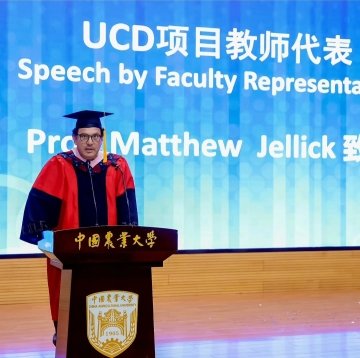
Yang has also used AI in the classes he teaches to provide individualized feedback to his students. “I have an online course that has approximately 5,000 students, and there’s no way I can offer them individualized feedback on a daily basis. I customize my AI by giving it precise and strict guidelines on how to offer feedback to students,” Yang said.
There is anxiety that AI will replace TESOL teachers, but Jellick thinks we are far from this point.
“If we’re good teachers, the relationships we’re able to build throughout the school year with our students will not—or at least I don’t think it will—be replaced by AI,” Jellick said. While AI can provide instruction and teach students things like subject-verb agreement, it can’t build relationships with students the way good teachers do. “That ability to build interpersonal relationships is what separates us from being replaced by AI or a physical robot,” Jellick said. And this skill—the ability to connect with students on a personal level—is one that all excellent teachers have possessed, long before the advent of digital technology.
For Yang, this question of AI replacing educators comes down to trust. “I don't think these core qualities could be replaced either because part of it is trust building,” he said. “Can you really build trust with ChatGPT? I hope not.”
Research at USC Rossier
While AI has been at the forefront of discussions about education and technology, we’ve been using the technology for decades, explained USC Rossier Professor Nooshan Ashtari.
“Generative AI, natural language processing, machine learning and large language models [are used in] search engines, personal virtual assistants such as Siri and Alexa, navigation apps, recommendation systems on streaming services and online stores,” Ashtari said.
Ashtari has worked at the intersection of education and technology for over 12 years. Her expertise in language learning, combined with her knowledge of technologies like virtual reality, augmented reality and AI, has given her unique insight as she has developed products and services to aid teachers and students, particularly in language learning, for ed-tech companies.
Using augmented reality, which Ashtari describes as “a technology that enhances the real world by overlaying computer-generated digital content onto the user’s view of it,” she worked on a team that developed a platform for an ed-tech company that helped users learn new language skills while browsing the internet.
“Each time users visited a web page,” Ashtari said, “they would automatically see translations of certain words in the language they were trying to learn.” To develop the program, Ashtari drew on second language acquisition theories and the comprehensible input hypothesis, developed by USC Rossier Emeritus Professor of Education Stephen Krashen. Krashen’s theory suggests that language learners acquire new languages when they are exposed to language that is slightly beyond what they currently know and understand.
Ashtari is also researching the potential of multi-user virtual environments (MUVEs) for teacher training. The method is particularly promising for “addressing the gap between theory and practice,” Ashtair said. Choosing this gap, she believes, is especially important for “equipping teachers with the skills to successfully facilitate learning among students with diverse language and cultural backgrounds.” MUVEs allow teacher candidates to train in “scaffolded, controlled environments with faculty guidance, without the risk of negatively affecting real students,” Ashtari said.
Students are also employing new technologies to support their learning, and in the fall of 2025, USC Rossier Professor of Clinical Education Emmy Min will begin researching how USC Rossier MAT-TESOL international students are using AI.
Funded by a grant from USC Undergraduate Research Associate Program, Min’s hope for the research is that it will help TESOL faculty “better support our international student population,” she said. The research “will help educators understand more about the evolving role of AI as international students use AI to learn language, content, navigate cultures, social network and tap into various resources,” Min said.
She will recruit an undergraduate research associate from USC Rossier’s education minor program and a group of USC Rossier MAT-TESOL students to assist with the study. The team will interview international students within USC Rossier’s MAT-TESOL program about “their everyday use of AI during their academic, social and daily activities,” Min said. They will also collect examples of the ways international students are using AI as well as their “perspectives of different types of AI, and their feelings and reliance on the use of AI,” Min said. Min and the team will present their findings at conferences and through publications in spring 2026.
Career prospects
While technology promises to change the delivery of language learning and teacher training, as Jellick said, these new technologies cannot replace humans at this point. While online classrooms and AI-enhanced instruction will likely become increasingly common in TESOL education, quality TESOL instructors are still needed.
What will change is the need for TESOL instructors to be adept at using these emerging technologies to their advantage, whether that means saving time that can now be used to work with students one-on-one or creating things like video content that can be used as instructional tools. “It’s our job to not only prepare students how to use [AI] through the process and not just that end result, but to train ourselves [how to use AI] as continuous learners,” Jellick said.
As new technologies emerge, so too are new career opportunities for MAT-TESOL graduates. More edtech companies are moving into the TESOL space, and they need subject matter experts who understand the pedagogy of language learning to help with tasks like curriculum development, Yang said. Both Yang and Professor Ashtari’s extensive work in the edtech field illustrates this need.
There are also opportunities for TESOL graduates in the corporate world. “There are a wide array of professional opportunities beyond the traditional classroom,” Yang said. “I recently accepted a case of designing an LMS (learning management system) for a film company.” The company wanted to offer their courses online but had no idea how to go about designing an LMS. Yang, with his expertise in education, was able to guide the company through the process.
The enduring need for TESOL educators
While the way English is taught has changed over the years as new pedagogical approaches have taken hold and new technologies emerge, English remains the “lingua franca,” Jellick said. “English is still the language of education, research, economics and business,” he explained and learning English provides the “ability to communicate on a global scale.”.
Thus, as long as there is a desire to learn English, there will also be a need for quality TESOL teachers to help language learners reach their goals.
And for Yang, being a quality TESOL educator means “being there for the student, listening to the student and building a relationship with them.” Many of us now have access to language learning tools, “but if you were to just leap into [studying English] yourself, without someone pointing out salient features, like sentence starters and grammatical features that you need to pay attention to, it’s very difficult to learn,” Yang said. “Teachers will still serve as a guide and an anchor point.”

